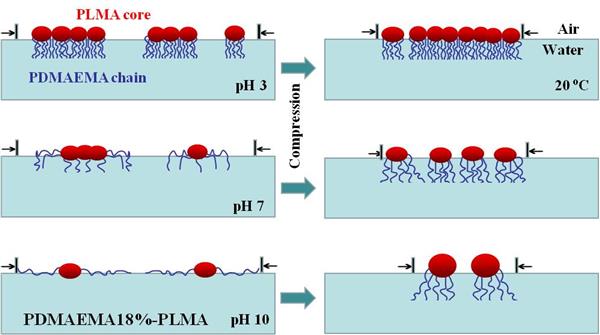20.【J. Phys. Chem. C】Effects of Copolymer Composition and Subphase pH/Temperature on the Interfacial Aggregation Behavior of Poly(2-(dimethylamino)ethyl methacrylate)-block-poly(lauryl methacrylate)
writer:Chen, H.; Wen, G.; Chrysostomou, V.; Pispas, S.; Pan, W.; Zuo, J.;Li, M.; Li, H.; Sun, Z.
keywords:LB film; block copolymer; PDMAEMA-b-PLMA; stimuli-responsiveness; subphase pH
source:期刊
specific source:J. Phys. Chem. C 2020, 124(8), 4563-4570.
Issue time:2020年
The Langmuir film balance technique was used to investigate the effects of copolymer composition and subphase pH/temperature on the aggregation behaviors of two stimuli-responsive amphiphilic diblock copolymers poly(2-(dimethylamino)ethyl methacrylate)-block-poly(lauryl methacrylate) (PDMAEMA-b-PLMA) at the air/water interface. The morphologies of their Langmuir-Blodgett (LB) films were characterized by atomic force microscopy. With the rise in subphase pH, the corresponding surface pressure-molecular area isotherms of the two copolymers gradually move to large areas due to the decreased protonation degrees of PDMAEMA blocks. Almost all the LB films of the predominantly hydrophilic copolymer prepared under different subphase conditions exhibit isolated circular micelles. For the predominantly hydrophobic copolymer, however, the dense worm-like aggregates and the large domains appear in its LB films due to the connection of adjacent PLMA cores at low temperature and the local richness of PDMAEMA chains at high temperature, respectively.

Article Address: https://pubs.acs.org/doi/pdf/10.1021/acs.jpcc.9b10673
Article on Request: https://pubs.acs.org/articlesonrequest/AOR-f6VhMuj3Qpp85TkQCwzX